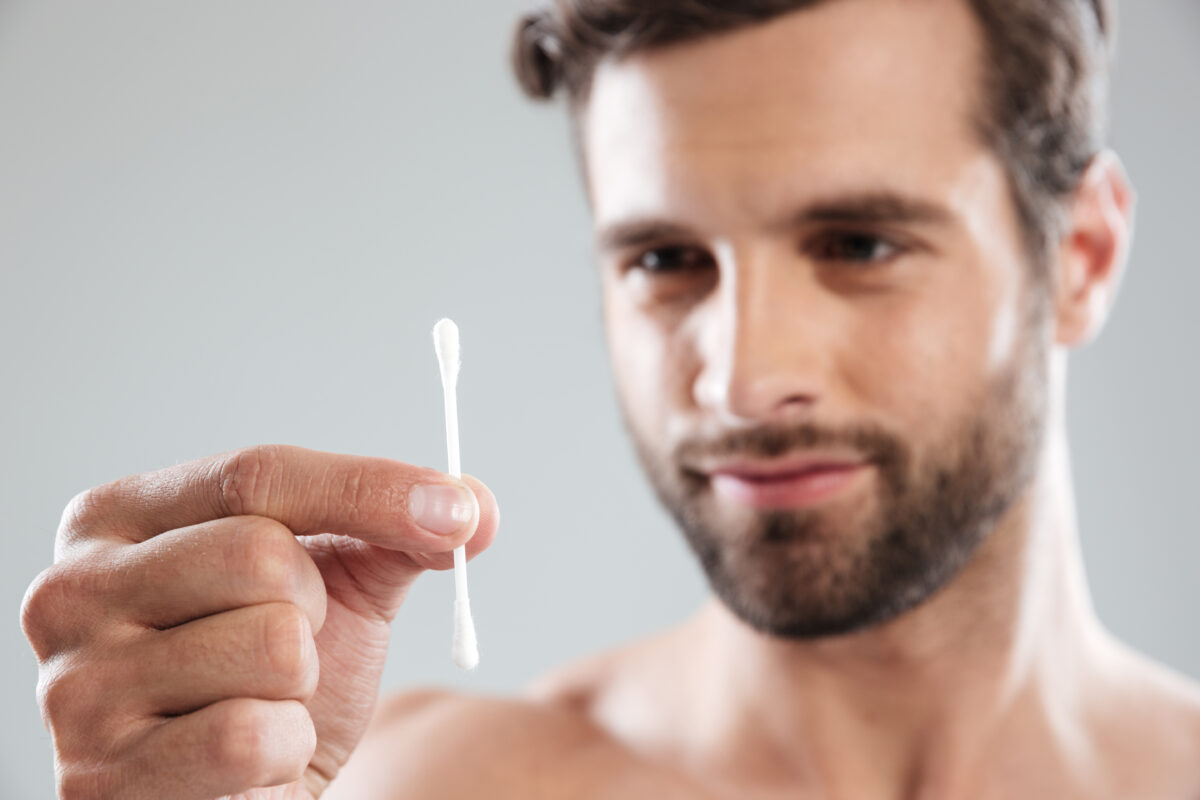Everyone knows that regular ear cleaning is essential. But don’t do it just any old way! To preserve the integrity of the eardrum, cleaning the ear canal must follow certain rules. Here are a few things you should do carefully to clean your ears and those of your child in complete safety.
For good ear hygiene, regular cleaning is essential. Should you use a cotton swab? Every day or once a week? We still have questions about a banal daily hygiene gesture.
What you need to know about Calminax
Regular ear cleaning: why is it necessary?
Regular ear hygiene allows earwax to be removed from the ear canal.
What flows out of the ear, earwax, is a mixture of fatty substances, minerals naturally produced by glands located in the first third of the ear canal, and dust. This earwax is useful: it lubricates the canal, protects it and rids it of impurities, and then it is supposed to evacuate itself without any external help. A self-cleaning system that sometimes leaves unsightly wax crumbs. You remove them according to your own rhythm of wax secretion, but not more than once a week.
Cleaning your ears keeps them healthy and prevents ear problems. But you need to know how to do it.
Ban the cotton swab, which can cause blockages and injuries
Most people use a cotton bud to clean their ears. However, it is often misused and is an inappropriate accessory: it is not designed to be inserted into the ear canal at all, but rather to clean the ridges of the ear.
Misuse of the cotton swab can lead to damage and injury to the eardrum, earwax build-up, ear pain, tinnitus and hearing loss.
For those who cannot do without a cotton swab: use a tight, lint-free cotton stick. It should be placed at the entrance to the ear canal, without pushing it in, and then remove the earwax with a gentle movement from the inside out.
How do you clean ears without a cotton swab?
ENT doctors recommend simple ear cleaning in the shower.
- Run a small stream of warm water into the ears (but with little pressure). You can gently and quickly lather the pinna, but this is not necessary;
- Then gently dab the entrance to the ear canal with a clean towel or cloth to dry and remove the fluid. This prevents the risk of otitis.
Alternatively, use a moistened handkerchief or clean cloth and clean the ear opening and pinna directly.
It is advisable to clean your ears once or twice a week at most.
Only do this if your eardrum does not show any signs of perforation, pain, pus or blood. If this is the case, visit your doctor quickly.
Too much earwax in the ears: use a cleaning spray
In the case of heavy earwax “production”, a classic washing is not enough. It is advisable to spray a spray (A-Cerumen from Gilbert, Docuspray from Quiès…) which sends droplets of surfactants to the bottom of the canal. These break up and solubilise the cerumen clusters, encouraging their physiological elimination. This procedure should be carried out 3 to 4 consecutive evenings.
On the other hand, forget :
- Ear candles;
- Water sprays that cause maceration at the bottom of the canal;
- Oily solutions that stain and give an impression of grease in the ear.
If you have ear problems, try Calminax which has shown great results in many ear sufferers: Calminax.
